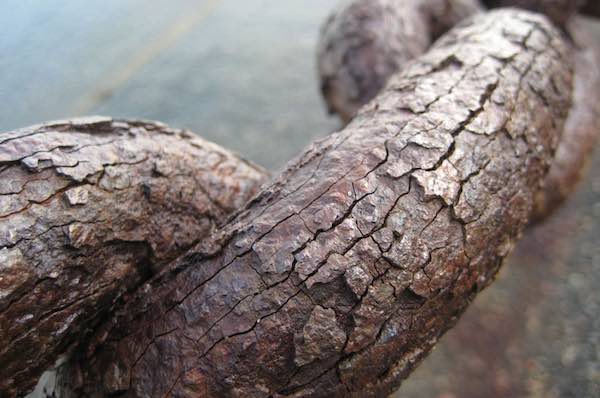
[Image above] Oxidation at its finest. Credit: Drexel
Oxidation can be such an aggravation.
That’s because oxidation causes rusting, corrosion, and fouling of even the toughest materials we humans can engineer.
Even borides, which are some of the hardest and most heat-resistant materials out there, oxidize at high temperatures, destroying the materials’ structural integrity.
Boride materials are often used in demanding applications in harsh environments, such as wear-resistant coatings, battery electrodes, and high-temperature-resistant structural materials—so when they fail, they can cause big problems.
However, researchers from Drexel University (Philadelphia, Pa.), Linkoping University in Sweden, and Imperial College London think that they can make borides better.
By giving the material a protective layer of aluminum, the scientists have developed the world’s first corrosion-resistant boride.
The tough new material, molybdenum aluminum boride (MoAlB), is a molybdenum-boron lattice with alternating layers of aluminum.
To develop MoAlB, the researchers took inspiration from their research on MAX phases, a family of layered early transition metal carbide and nitride materials. MAX phases have a layered crystal structure with interleaving layers that give the materials unique properties, including thermal shock resistance, machinability, oxidation resistance, and high-temperature plasticity.

Using techniques gleaned from MAX Phase and MXene fabrication, Drexel’s research group developed a method for making corrosion-resistant layered boride. Credit: Drexel
Noting structural similarities, the authors speculated that they could make molybdenum boride with a structure similar to that of MAX phases, which would help the material resist oxidation at high temperatures.
They were right.
The researchers explain that at high temperatures, aluminum atoms diffuse to the surface of MoAlB, where they react with oxygen to form a protective layer of alumina. “So the material forms its own protective coating,” Michel Barsoum, lead author of the research and distinguished professor in Drexel’s College of Engineering, says in a Drexel Now news story.

Layers in the new molybdenum aluminum boride material, which forms a protective layer of alumina. Credit: Drexel
“This discovery is quite significant because it is the first example in the history of mankind of a transition metal boride that is quite oxidation resistant,” Barsoum says.
MoAlB maintains its high conductivity at high temperatures, making it potentially useful in a variety of applications. The team reports that that the material’s melting point is more than 1,400ºC, suggesting that it may lead to development of ultrahigh melting point borides that are oxidation resistant.
The open-access paper, published in Scientific Reports, is “Synthesis and characterization of an alumina forming nanolaminated boride: MoAlB” (DOI: 10.1038/srep26475).
Author
April Gocha
CTT Categories
- Material Innovations
- Nanomaterials


